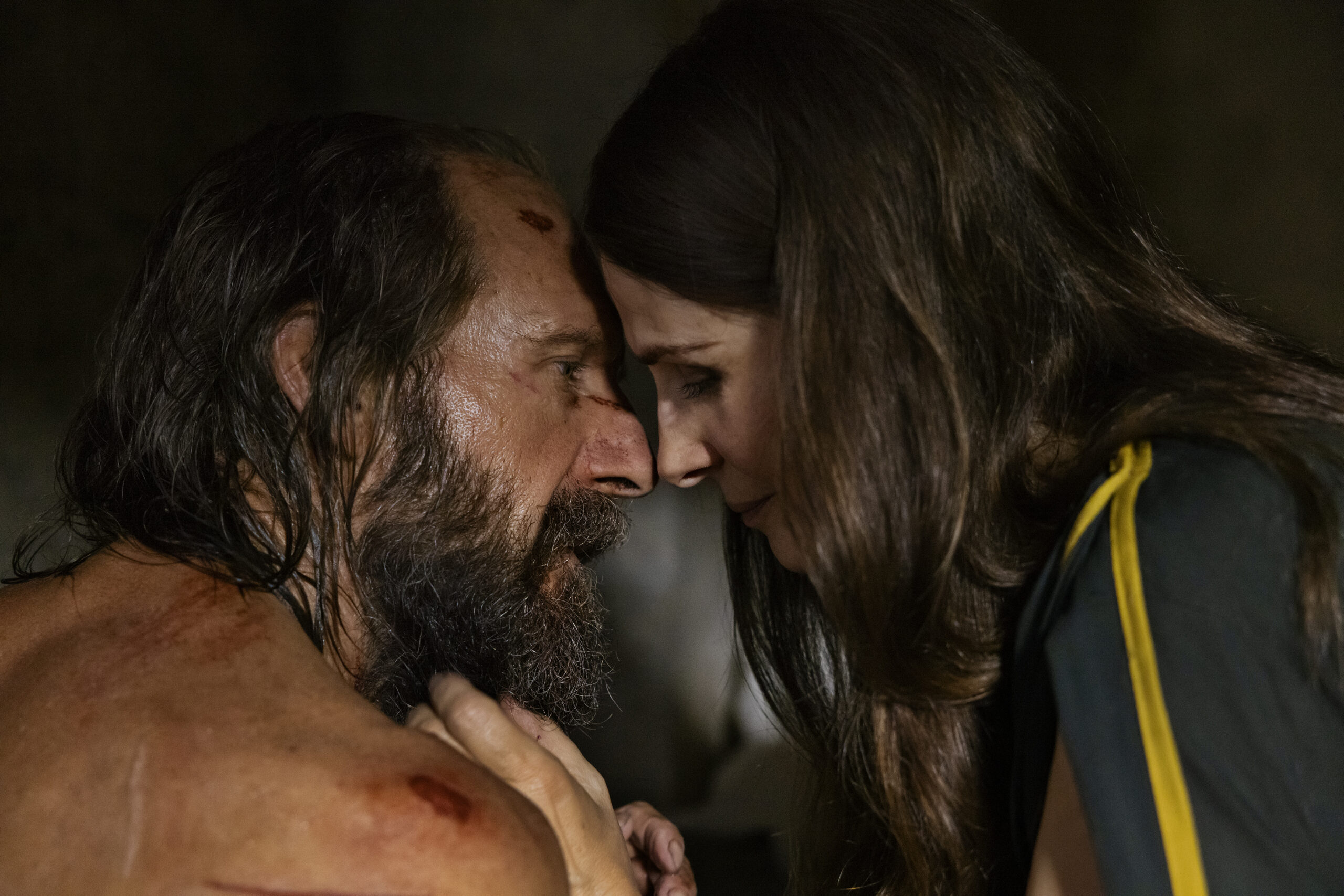
There aren’t any gods or mythical creatures in Uberto Pasolini’s The Return. Perhaps, if there were, the former would be looking down at the island of Ithaca with shame and pity. The Italian director – and the man behind the likes of Still Life and Nowhere Special – gives a decidedly visceral human experience instead.
It has been over ten years since the Trojan war. Odysseus (Ralph Fiennes) is missing, presumed dead. The kingdom that was once his now swarms with viperous suitors, all vying for the hand – and the wealth – of its queen, Penelope (Juliette Binoche). Telemachus (Charlie Plummer) is also at risk, too, as being heir to the throne puts a target on his back. When Odysseus washes up on the shore, bloodied and bruised, will he be able to take his place as king or has his time away changed the fate of Ithaca irrevocably?

As a film, The Return feels rather subdued. Like a classic BBC Sunday night drama in parts, it’s laden with dialogue that is supposed to feel profound (but often falls short). There’s almost a dreariness about it, as if to emphasise Odysseus’ profound state of despair. If you’re coming to this expecting daring hand-to-hand combat or mythical beings, you are going to be disappointed. Instead, this is a wordy, character driven drama.
And, at the heart of it all, is Ralph Fiennes. Having cast off the scarlet robes of Conclave, he’s extremely ripped and sunkissed. And he wants you to know. The camera gazes lovingly over his body, taking in every wound and scar. His eyes appear as luminous as the sea he washes up from. Fiennes takes his time with the character, portraying the mythical hero as traumatised by his experiences. He is disillusioned with the concept of war (but, boy, can he handle himself if pushed). Indeed, the film feels like an exploration of Odysseus PTSD, if such a thing were to be diagnosed in Ancient Greece.
He is the character with the most to do, unfortunately. An array of suitors (led by Marwan Kenzari’s Antinous) spend their days lazing around the palace, thinking of new ways to convince Penelope to marry one of their interchangeable persons or dispatch with Telemachus. Charlie Plummer doesn’t get much character development, either, other than refusing to believe that Odysseus is who he says he is before quickly accepting him. And whilst the camera, too, is in love with Juliette Binoche’s kohl–rimmed eyes by the firelight, her talents are woefully underused. We never get a sense of Penelope and Odysseus’ great love story; their chemistry is palpable but they have so little screen time together. There’s a lovely motif of Penelope unpicking her daily work at the loom – as if attempting to unspool her own fate – but that, too, is underdeveloped. In fact, she is only on screen or has dialogue in relation to the chorus of men, which stagnates and flattens any sense of who the character is.

However, the film is beautiful to look at. Those crystal clear waters will have you longing to book a holiday. The palace is entirely lit by firelight meaning that, even during the day, it is a shadowy and untrustworthy place. The action is a bit lukewarm but the moment Ralph Fiennes gets to re-string his bow is truly magnificent to behold. His dominant, hyper masculine archer’s stance allows you to take in every sinew of his body; tensing as the fate of his kingdom relies on his prowess. (Seriously, was that body under Cardinal Lawrence’s robes?)
The Return has two really big names attached to it, some gorgeous scenery and one really powerful performance. But, unfortunately, that might be all it has going for it. It really does feel like a television drama that doesn’t quite translate to the big screen.
The Return had its UK premiere at the Glasgow Film Festival and will be in UK cinemas as of April 11.
https://www.youtube.com/watch?v=aOQQ45ddYdk


Article courtesy of the International Drivers Association
In recent years, the arts industry has faced an array of challenges that have transformed how organizations operate and interact with their audiences. Despite the thriving creativity inherent in the sector, economic realities and market dynamics present significant hurdles for arts organizations, particularly in regions less inclined to support cultural initiatives. This situation has sparked a conversation around the need for strategic innovation and adaptation in the arts, as highlighted in discussions among industry professionals seeking to address these pressing concerns. A notable trend reshaping the arts is the integration of technology as both a medium and a tool for engagement. This was exemplified by the National Endowment for the Arts’ publication of “Tech as Art,” which urges the sector to invest in digital cultures at both administrative and programmatic levels. This push for digital innovation not only helps in maintaining relevance but also in reaching broader audiences.
Furthermore, the arts industry is increasingly focused on strategic collaboration to mitigate challenges, such as funding shortages and environmental impacts. By understanding the nuances of strategic alliances, arts organizations can leverage collective strengths to enhance their operational resilience. This spirit of collaboration is complemented by insights from ISPA members who emphasize the importance of generational cooperation and innovative approaches to overcome financial and environmental obstacles. In terms of marketing, arts organizations often encounter difficulties in effectively communicating their value propositions, particularly in saturated markets. Audience segmentation has emerged as a crucial strategy for aligning offerings with the specific needs of diverse target groups. By employing best practices in audience development, arts organizations aim to optimize their engagement efforts, though comprehensive guidelines remain sparse. Ultimately, the landscape of the arts industry is characterized by a complex interplay of creativity, innovation, and adaptation. As organizations navigate these challenges, they continue to redefine their roles within the cultural ecosystem, striving to make their value known amidst a sea of competing interests and economic pressures.
In the realm of arts organizations, a peculiar paradox has emerged: while these entities possess vital survival tools, they often struggle to market them effectively to an industry gasping for air. For many artists and arts organizations, marketing is perceived as a betrayal of their creative ideals. The term “marketing” conjures images of selling out and compromising artistic vision for the sake of audience approval. This resistance to embrace marketing is deeply rooted in a belief that art should exist free from commercial influence, a notion that is increasingly being challenged in today’s economic climate. Nonprofit arts organizations, in particular, face unique marketing challenges. Often, they fail to recognize the critical role marketing plays in their survival and growth. A comprehensive marketing strategy is crucial not only for generating revenue and raising funds but also for cultivating relationships and advancing their mission. Yet, many organizations still view marketing as a cost center rather than a lifeline that can drive strategic goals forward. This mindset can impede their ability to communicate effectively with target audiences and secure necessary funding. Collaboration is touted as a potential solution, but it also comes with its own set of pitfalls. Strategic collaboration requires careful navigation to avoid missteps and maximize opportunities for leverage. Understanding these dynamics is essential for arts organizations seeking to join forces with others in the industry. By sharing resources and knowledge, arts organizations can enhance their marketing efforts and broaden their reach. Moreover, the recent challenges posed by the COVID-19 pandemic have underscored the need for a more dynamic approach to arts marketing. The pandemic’s impact on the cultural sector has been profound, disrupting traditional marketing strategies and necessitating the adoption of new digital tools and platforms. Arts organizations have had to quickly adapt to this new reality, leveraging digital interaction to maintain audience engagement during a time of unprecedented social distancing. Despite the clear need for robust marketing strategies, the arts industry continues to grapple with funding challenges and a hesitance to fully embrace marketing as a tool for survival. This marketing paradox—having essential tools but struggling to utilize them effectively—highlights the tension between maintaining artistic integrity and ensuring organizational viability. As the arts sector navigates this complex landscape, the ability to balance these competing demands will be critical to its long-term success.
In the realm of the arts, traditional marketing has long faced criticism for compromising creative integrity, with many artists viewing it as a means to pander to the audience rather than staying true to their artistic vision. This reluctance to embrace marketing is rooted in the fear that it dilutes the authenticity of the artistic process, making it difficult for arts organizations to adopt marketing strategies that could be vital for their survival. Moreover, traditional marketing often falls short because it fails to address the unique challenges that arts organizations face, such as the rapid shift to digital platforms and the demand for remote work options, which were accentuated by the pandemic. In 2009, when arts organizations experienced a decline in audiences and funding, many perceived it as a temporary setback caused by the economic downturn, rather than an indication of deeper systemic issues in marketing practices. Furthermore, the lack of a strategic approach to marketing and communications in the nonprofit sector, including arts organizations, leads to missed opportunities for growth and audience engagement. Nonprofits often view marketing as a cost center, rather than as an integral part of their mission and long-term survival strategy. This perspective contributes to the underutilization of adaptive, goal-based budgeting that could align marketing efforts with broader organizational goals and measurable impacts. In addition, traditional marketing methods often do not resonate with the evolving digital landscape. Arts organizations need to leverage digital engagement to foster a more democratic and relational interaction between artists and audiences. Without embracing such innovative approaches, traditional marketing fails to cultivate meaningful connections that could enhance audience development and organizational success. Thus, the arts sector finds itself in a marketing paradox, where the tools necessary for survival are seen as threats to its very identity.
In the constantly evolving landscape of arts marketing, traditional strategies often fall short in reaching audiences effectively. As the industry grapples with financial challenges, innovative approaches become not only desirable but necessary for survival. The fusion of art and marketing is not new, but as the boundaries of both fields expand, so too do the methods of engagement and outreach.
Immersive marketing, also known as engagement marketing, utilizes cutting-edge technologies like augmented reality (AR), virtual reality (VR), and live events to craft experiences that directly involve consumers, thus creating deeper connections with a brand or product. This strategy has found a natural ally in the arts sector, where sensory engagement can transform passive spectators into active participants. By integrating immersive art installations into brand strategies, organizations can create captivating experiences that forge emotional connections with audiences.
Digital platforms have dramatically reshaped how arts organizations engage with their audiences. As we approach 2025, trends in digital marketing continue to evolve, with tools like text messaging, analytics, personalization, and hybrid events enhancing engagement and operational efficiency. Digital spaces allow for innovative interaction, but they require strategic implementation to maximize their potential. Platforms like Audience Access, which integrates digital program books with audience engagement features, illustrate how technology can be harnessed to connect with patrons both in-person and virtually.
Collaborations remain a powerful tool in the arts marketing arsenal. Whether through partnerships with other artists, brands, or organizations, these alliances open up new opportunities and enhance visibility. Strategic collaborations empower arts organizations by allowing them to share resources, reduce costs, and amplify their reach. Such partnerships can involve cross-sector stakeholders, including government, nonprofits, and corporations, leveraging their collective strengths to address community needs and broaden audience engagement.
The art of audience segmentation allows organizations to tailor their marketing efforts more precisely. By dividing a target audience into smaller, more specific groups, arts organizations can craft messages that resonate more deeply with each segment. This practice not only improves the effectiveness of marketing campaigns but also fosters a more personalized interaction with the audience. Advanced segmentation techniques, like The Audience Agency’s Audience Spectrum, provide insights into audience attitudes and behaviors, enabling more strategic decision-making.
In an industry grappling with unprecedented challenges, the arts sector has had to pivot dramatically to ensure survival and relevance. The case studies of various arts organizations reveal both innovative approaches and the stark realities of marketing in a time of crisis.
The pandemic forced many arts organizations to rethink their strategies, focusing on adaptability and resilience. As detailed in the Arts Endowment’s research, arts organizations have embraced diverse reopening practices, offering insights into how to sustain operations during such turbulent times. These organizations showcased an urgent need to reassess their business models, with a focus on identifying strategic target groups and implementing change when necessary.
Audience engagement has emerged as a critical factor in the survival of arts organizations. The Wallace Excellence Awards shed light on how 10 organizations successfully built their audiences by recognizing when change was essential and implementing audience-centric strategies. This approach highlights the importance of not only retaining existing patrons but also cultivating new ones through targeted initiatives.
Despite the potential for creative marketing, not all strategies have yielded positive results. Many organizations found that traditional marketing tactics such as paid advertising were not delivering the desired outcomes, prompting a reevaluation of these methods. This has led to a shift towards more community-driven strategies, though challenges remain in finding the right balance and approach.
In response to the limitations of conventional methods, some organizations have turned to immersive arts as a way to engage and captivate audiences. The integration of immersive experiences into marketing strategies represents a significant shift towards experiential storytelling, transforming passive consumption into active participation. This strategy has been exemplified by initiatives like The Van Gogh Experience, which turned galleries into interactive, living exhibitions, thereby deepening audience connection through sensory engagement. These case studies illuminate the complex landscape arts organizations navigate in their marketing endeavors. While some strategies have succeeded in engaging audiences and sustaining operations, others have highlighted the paradox of trying to sell survival tools to an industry already in distress. As the arts continue to evolve, these insights will be crucial for organizations seeking to thrive in a post-pandemic world.
As arts organizations struggle to remain buoyant in an industry facing multifaceted challenges, a tapestry of strategic initiatives emerges as crucial for their survival and growth. These strategies aim to navigate the turbulent waters of financial instability, changing audience dynamics, and an increasingly digital world.
At the heart of any resilient arts organization is a meticulously crafted strategic plan that is continuously updated to reflect changing circumstances. This involves setting financial goals, planning budgets, and maximizing resources, all while fostering a unified organizational vision that aligns staff and stakeholders around common objectives. Strategic planning not only ensures long-term viability but also helps arts organizations engage with their communities in a meaningful way, thereby strengthening emotional and intellectual connections. With an ever-changing landscape, arts organizations must remain agile, adjusting their plans as necessary to respond to new challenges and opportunities.
In an era where digital engagement is paramount, audience segmentation has become an invaluable tool. By dividing their target audience into smaller, more defined groups, arts organizations can tailor their offerings to meet the specific needs and preferences of these segments. Audience segmentation best practices allow organizations to enhance marketing strategies and engagement efficiencies, thereby reaching patrons more effectively and expanding their reach. Implementing these practices can help arts organizations maintain relevance and build stronger relationships with their audiences, fostering loyalty and support.
Collaboration is a powerful avenue for arts organizations seeking to expand their influence and resources. By working with other artists, brands, or organizations, they can unlock new opportunities and increase visibility. Collaborations offer a platform for shared creative growth, fostering innovation and allowing organizations to explore new avenues for audience engagement and artistic expression. This strategy not only broadens the organization’s reach but also enhances its ability to deliver exciting and relevant programming.
Immersive and experiential marketing strategies are transforming how arts organizations connect with their audiences. Through innovative technologies like augmented reality (AR) and virtual reality (VR), organizations can create immersive experiences that captivate audiences and forge deep emotional connections. These experiences are not just about entertainment; they are about engaging spectators in a manner that deepens their connection with the art and, by extension, the organization itself. By integrating immersive arts into their marketing strategies, organizations can enhance their audience’s experience and foster a lasting impact.
The digital revolution has provided arts organizations with new tools to captivate audiences and deepen engagement. Digital spaces allow for enhanced spectator interaction, offering a dynamic and evolving platform for art marketing. By embracing these digital opportunities, arts organizations can reach broader audiences, break geographical barriers, and ensure their art remains accessible to a diverse and global audience. The transition to digital isn’t merely a shift in platform but a strategic move to ensure sustainability in a rapidly changing world.
In a world where the arts industry is facing unprecedented challenges, it is imperative for organizations to not only focus on immediate survival but also on thriving in the long term. Arts organizations must harness the power of strategic collaborations to expand their reach and engage with wider audiences. By sharing resources and reducing costs, these collaborations can increase efficiency and enhance visibility, ultimately leading to increased support and funding. Furthermore, strategic planning should serve as the compass that guides these organizations through challenges, enabling them to capitalize on emerging opportunities. Engaging in formal strategic planning and community engagement can result in enhanced clarity regarding their mission and vision, which in turn improves decision-making processes.
Now is the time for arts organizations to foster a culture of readiness by equipping their staff with the necessary strategies to navigate unforeseen challenges. Through these efforts, the arts can not only survive but thrive, ensuring their vital role in society remains steadfast. We urge arts organizations to embrace these strategies and innovations, tapping into the digital world to better understand and engage their target audience. Whether through digital marketing strategies or online courses that inform marketing initiatives, organizations have the tools at their disposal to adapt and evolve. Let us come together, harness our collective strength, and ensure the arts industry not only survives but flourishes in the face of adversity.
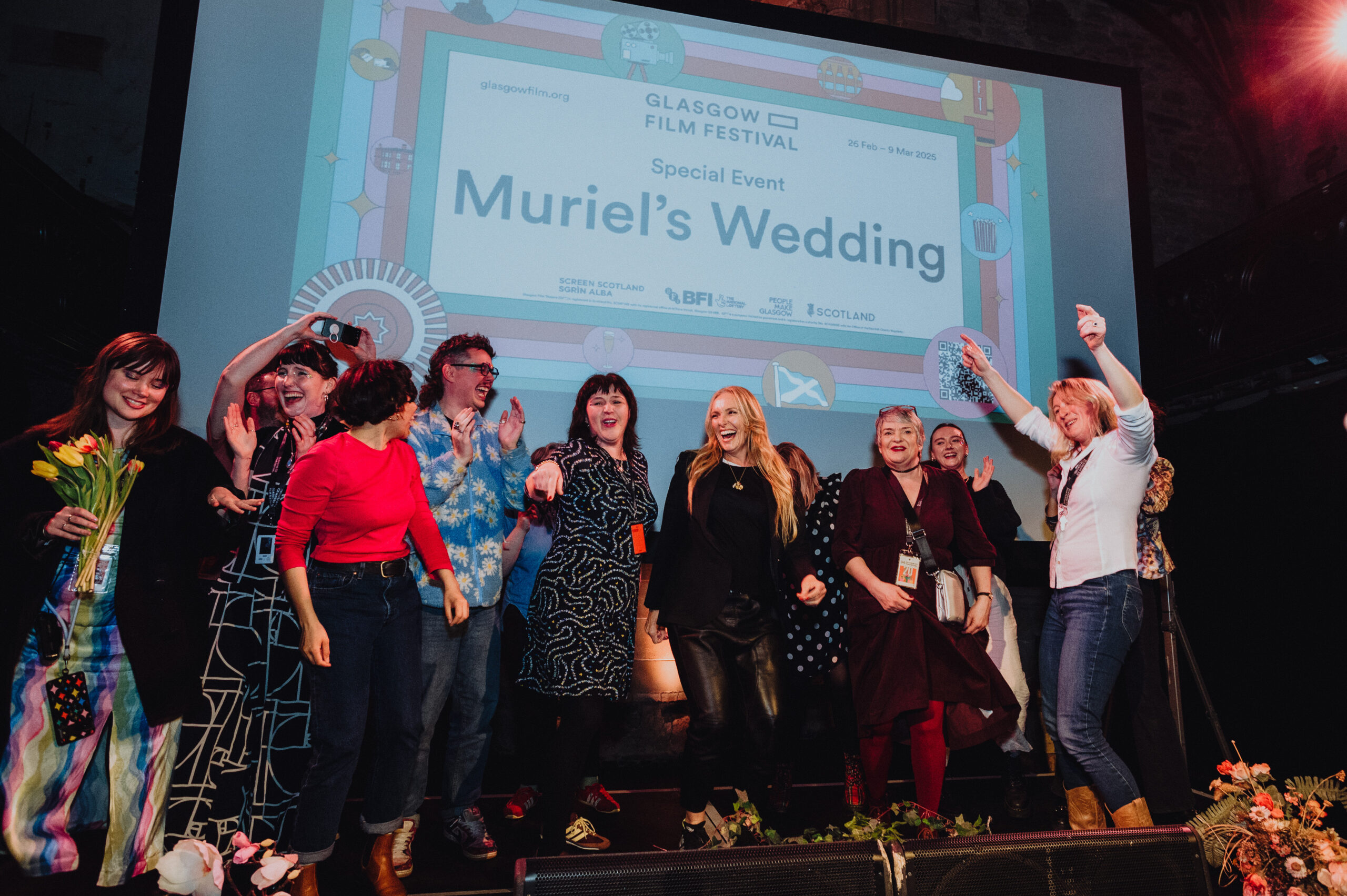
Glasgow Film Festival (GFF) wrapped the 21st edition of Scotland’s flagship film festival after an epic 12 days, featuring 114 feature films from 39 countries at Glasgow Film Theatre and nine other venues across the city, attracting over 33,000 attendances.
For the first time in its history, the festival opened and closed with Scottish world premieres – John Maclean’s Tornado and Make it to Munich from Martyn Robertson. The programme continued to spotlight Scottish talent with Glasgow-shot, Amazon studios drama Fear being given a big-screen premiere at GFT, and Edinburgh director Laura Carreira’s debut feature On Falling screening at 10 partnering cinemas across the UK.

The celebration of Scottish film on screen extended beyond the film programme into the GFF industry programme that returned for its 10th edition this year. GFF continues to be the major meeting point for the Scottish filmmaking sector, welcoming almost 750 delegates to the festival. The event – at brand new venue The Social Hub Glasgow – hosted the four-day conference that offered panels, 1-2-1 meetings and networking opportunities for delegates at all stages of their screen careers.
GFF25 Industry Focus saw Kaljeven Lally (writer), Isabella Bassett (producer) and Jena Hunter’s (producer) Responsibility win the inaugural Funny Features Industry Audience Award. The feature follows Sanjeev who quickly becomes suspect-number-one in a bizarre murder case and the target of two opposing crime families, the police, and not to mention… his parents. Industry Focus’ newest talent lab gave participants access to one-to-one consultancy sessions, workshops and bespoke mentoring to support the development of their projects.
This year also brought the sophomore year of the Animatic Talent Development scheme to facilitate the development of Scottish creatives’ animated features, TV series and short film ideas. This saw three award winners and a special mention at The Animatic Live Pitch. The winner for Best TV/Feature Pitch was animated Scottish folk mystery Lochs & Legends by Abi Lamb and the award for Best Short Pitch went to To Myself and the Forest of Tigers by Sammi Duong. Overlords, an animated adult comedy series from Hannah Kelso was also presented with the inaugural Animatic Industry Audience Award. Finally, a special mention was awarded to The Three Graces by Wilma Smith.

The festival’s free programme of events this year included its daily free morning retrospective screenings, which welcomed hundreds of movie-goers each day to enjoy classics like Gregory’s Girl, Lady Bird and Boyz n the Hood on the big screen. GFF also worked with communities around the city to co-create a Community Takeover Day at Garnethill Multicultural Centre, which featured a free screening of Ukrainian sci-fi drama U Are The Universe, plus food and activities for all ages. This event was made possible with the help of the Glasgow 850 Festival Fund, as was the Festival’s Young Ambassador programme, a GFF initiative for 18-25 year old’s to learn more about the festival and stage their own pop-up cinema event.
Bringing cinematic gems and the talent behind them to Glasgow is what the festival does best, as was the case with the sell-out showing of the classic Australian film Muriel’s Wedding, where Toni Collette surprised the audience to join a GFF / ABBA lip sync. The Australian star said, “It really amazes me that an experience that changed my life profoundly still resonates with people and means so much to people and continues to inspire people so thank you for having her [Muriel] here tonight. I’m quite moved.”
GFF welcomed a multitude of famous faces onto the red-carpet including Jessica Lange, James McAvoy, Tim Roth, Ed Harris, George Mackay and Martin Compston. The festival also marked its final year under GFF director Allison Gardner, who retires from Glasgow Film in October.

Isabel Davis, Executive Director of Screen Scotland, said: “Screen Scotland is proud to be the major backer of Glasgow Film Festival, which has outdone itself once again with a powerful programme of films and events. Emblematic of the power of cinema to inspire and assemble people, the programme and guest speakers have drawn a fantastic response from the public. Meanwhile, the industry programme has taken another leap forward, convening local and international industry like never before, sparking industry conversations and myriad new connections across the week.
“This festival also marks the final edition under the leadership of Allison Gardner, whose passion, vision, and dedication have been central to shaping GFF into the world-class event it is today. We thank her for everything she has done for film in Scotland and beyond, and wish her all the very best for the future.”
This year’s Audience Award was won by Brian Durnin’s Spilt Milk.
Glasgow Film Festival will return for its 22nd edition in 2026 with the full programme revealed in January. Festival dates will be announced soon. A selection of films from GFF25 will screen at the GFT throughout 2025 with On Falling, The End, and Just Another Girl on the IRT screening this month.
You can find all of the Moviescramble GFF25 coverage here.
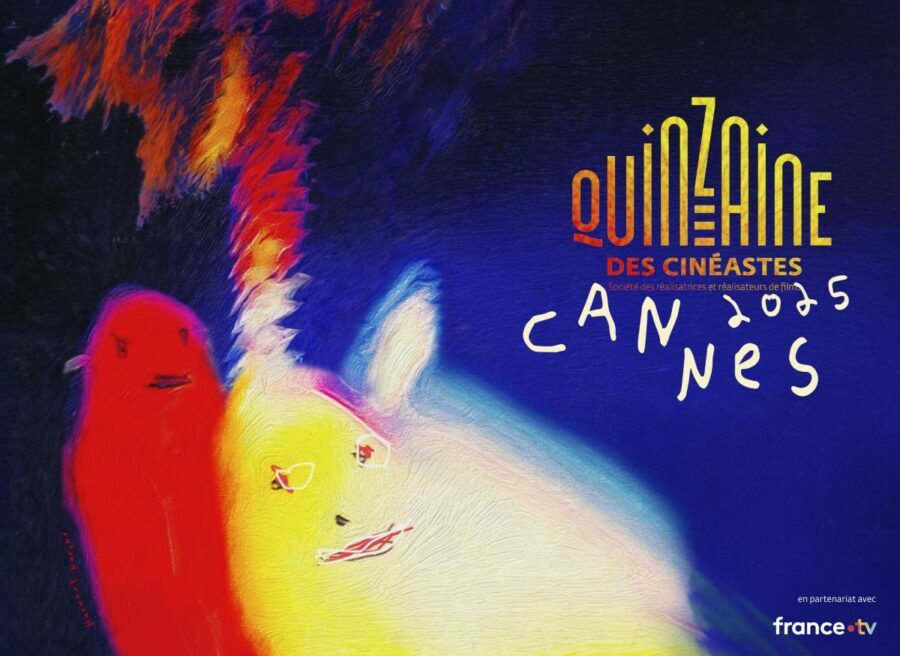
Today, the selection of Quinzaine des Cinéastes 2025 was presented by artistic director Julien Rejl. The strand has been around since 1969 and was formerly known as Quinzaine des Réalisateurs. The section runs parallel to the main festival and has typically been the place to find the best and most original works by directors who would later become famous. This year, 18 new features were chosen from 1605 submissions, including seven first features. The opening film is Enzo, a collaboration between Robin Campillo and Laurent Cantet. Other films are as follows.
LA DANSE DES RENARDS (The Foxes Round) – Valéry Carnoy
LA MORT N’EXISTE PAS (Death Does Not Exist) – Félix Dufour-Laperriè
L’ENGLOUTIE (The Girl in the Snow) – Louise Hémon – premier long métrage / first feature film
KOKUHO – Lee Sang-il
LUCKY LU – Lloyd Lee Choi – premier long métrage / first feature film
MILITANTROPOS -Yelizaveta Smith, Alina Gorlova & Simon Mozgovyi
GIRL ON EDGE (Hua yang shao nv sha ren shi jian) – Jinghao Zhou – premier long métrage / first feature film
CLASSE MOYENNE (Middle Class) – Anthony Cordier
MIROIRS No. 3 (Mirrors No.3) – Christian Petzold
LES FILLES DÉSIR (The Girls We Want) – Prïncia Car – premier long métrage / first feature film
DANGEROUS ANIMALS – Sean Byrne
AMOUR APOCALYPSE (Peak Everything) – Anne Émond
THE PRESIDENT’S CAKE (Mamlaket al-Qasab) – Hasan Hadi – premier long métrage / first feature film
INDOMPTABLES – Thomas Ngijol
BRAND NEW LANDSCAPE (見はらし世代) – Yuiga Danzuka – premier long métrage / first feature film
QUE MA VOLONTÉ SOIT FAITE – Julia Kowalski
SORRY, BABY – Eva Victor – premier long métrage / first feature film – film de clôture / closing film

There are some well-known names in the lineup. The opening film was a Laurent Cantet project, which Robin Campillo took over after his death. The most famous, but also the most surprising inclusion, is Christian Petzold. His films are typically screened at the Berlinale. Possibly, the film was not ready in time for that festival, but then, most outsiders would have guessed that it would get a competition or Un Certain Regard slot. Instead, it now found a home in Quinzaine. This is a significant demotion for the director unless the film is overly experimental, which would make it a better fit for this strand.
Anthony Cordier caused a splash in Quinzaine with Cold Showers in 2005 and now returns with Classe Moyenne. Canadian director Anne Émond, known for Nuit #1 (2011), presents Peak Everything, which is described as a rom-com. Julia Kowalski returns to the Quinzaine two years after her short I Saw the Face of the Devil competed there—both films star Polish actress Maria Wróbel. Militrantopos is a Ukrainian documentary.
Quinzaine des Cinéastes introduced an audience award last year, the Chantal Akerman prize. The first recipient was Matthew Rankin’s Universal Language. For some reason, Todd Haynes will receive the French Film Directors’ Guild’s lifetime achievement honour, the Carrosse d’Or award, at the section’s opening ceremony on May 14. Since 2013, the strand has housed a mentoring project called Directors’ Factory. This year, it will be devoted to young filmmakers from Ceará, in Northeastern Brazil.
Quinzaine des Cinéastes introduced an audience award last year, the Chantal Akerman prize. The first recipient was Matthew Rankin’s Universal Language. For some reason, Todd Haynes will receive the French Film Directors’ Guild’s lifetime achievement honour, the Carrosse d’Or award, at the section’s opening ceremony on May 14. Since 2013, the strand has housed a mentoring project called Directors’ Factory. This year, it will be devoted to young filmmakers from
The 2025 Directors’ Fortnight runs May 14-24. The selection committee is the same as the last two years. One can only hope they managed to select more intriguing films this time. The selection will be screened in numerous French cities after Cannes and in a few international locations as well. This year’s poster is designed by Harmony Korine.


Donald Trump tops the ranking as the most hated billionaire of 2025, with a hate score of 100. He has the highest number of negative news mentions (379.9K) and fraud-related searches (143K). His public disapproval rating of 40%, along with his Reddit hate score of 9.5, stems from controversial political actions and policies.
Elon Musk follows in 2nd with a score of 92, having the highest number of controversy-related searches (113K) among all billionaires despite his massive $195 billion net worth. His Reddit hate score of 9.4 is almost as high as Trump’s, driven by erratic behavior and worker treatment issues.
Rupert Murdoch ranks 3rd with a score of 64. He has the highest public disapproval rating (55%) of anyone on the list, much higher than Trump or Musk. His negative news coverage is much lower than the top two, but his influence through media ownership drives strong negative sentiment.
Gautam Adani comes in 4th with an overall hate score of 56, having the second-highest public disapproval rating (51%) among all billionaires. The Indian industrialist faces significant criticism over political connections and environmental concerns, though his Reddit hate score (7.1) is lower than other top-ranked billionaires.
Mark Zuckerberg is 5th with a score of 56. He has the third-highest number of negative news coverage (8,680) and a Reddit hate score of 9.1, driven primarily by Facebook/Meta’s privacy controversies and his perceived awkward public persona.
Jeff Bezos ranks 6th with a hate score of 47. His negative news coverage totals 6,175 mentions, primarily related to Amazon’s labor practices and his personal wealth accumulation. His Reddit hate score is 8.2, with a public disapproval rating of 30%.
Jamie Dimon ranks 7th with a score of 46. As JPMorgan’s CEO, he has the lowest net worth ($2.7 billion) in the top ranks. His fraud-related searches outpace his controversy mentions, unlike the pattern seen with those ranked higher.
Vince McMahon ranks 8th with a score of 43. The WWE founder has more “scam” searches than “controversy” searches, similar to Adani. Despite a high Reddit hate score (8.6), his public disapproval rating (23%) is the lowest among the top eight.
Bill Gates takes the 9th position with a hate score of 41. He has the highest raw number of negative mentions (11,770) of anyone on the list, but his lower public disapproval rating (27%) and moderate Reddit hate score keep his overall ranking lower.
George Soros rounds out the top 10 with a score of 36. He has the lowest Reddit hate score (5.9) among the top ten, despite being frequently targeted in conspiracy theories. His public disapproval rating (26%) is much lower than Murdoch’s 55%, explaining his position at the bottom of the top ten.
A spokesperson from Slot.Day commented on the study: “The intense public scrutiny of billionaires reflects broader societal concerns about power concentration rather than wealth alone. Those facing the strongest backlash typically combine economic influence with perceived ethical lapses or democratic interference, suggesting the public distinguishes between wealth creation itself and its application. This evolving dynamic signals a fundamental shift in how economic power must now navigate increasing demands for transparency and social responsibility in the digital age.”
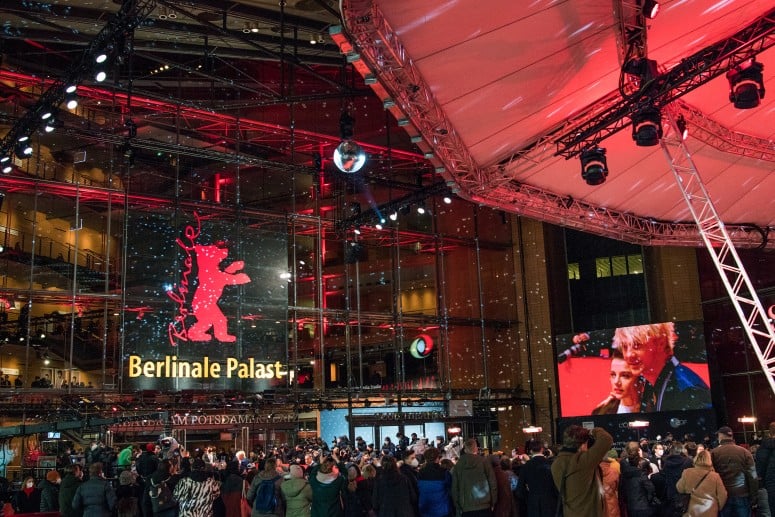
I have been visiting the Berlinale since 2014. Since it has been ten years since my first visit, I decided to list my 10 favourite Berlinale films from these years. I decided to be strict and not include films that premiered at the Berlin Fest but I saw elsewhere. That explains the absence of Josephine Decker’s Butter On The Latch and Thou Wast Mild and Lovely, which were screened in the 2014 edition but I saw at another festival. There are other examples as well. After getting that out of the way, let’s first give some honourable mentions that didn’t make the final list.
Two of them are Hungarian; 1945 by Ferenc Török, which was screened in the Panorama section in 2017, and Natural Light (Természetes fény) reviewed here, which played in the 2021 competition. The aforementioned Decker’s Madeline’s Madeline appeared in the Forum section in 2018. Maren Hwang’s Xiao Mei was screened in the Panorama section the same year. With those out of the way, let’s proceed to the actual list.

Siberia is not the first collaboration between Abel Ferrara and Willem Defoe, but it might be the most fruitful one. The protagonist tries to leave his life behind and goes on a journey to a cold place where nobody seems to speak a language he understands, and it’s typically bodies that meet. It’s still as much a journey into the man’s mind as an outward one. Ferrara’s film manages to be epic and simultaneously mysterious and metaphorical. The film competed but was not close to winning any awards. Reviews were mixed, as they say.
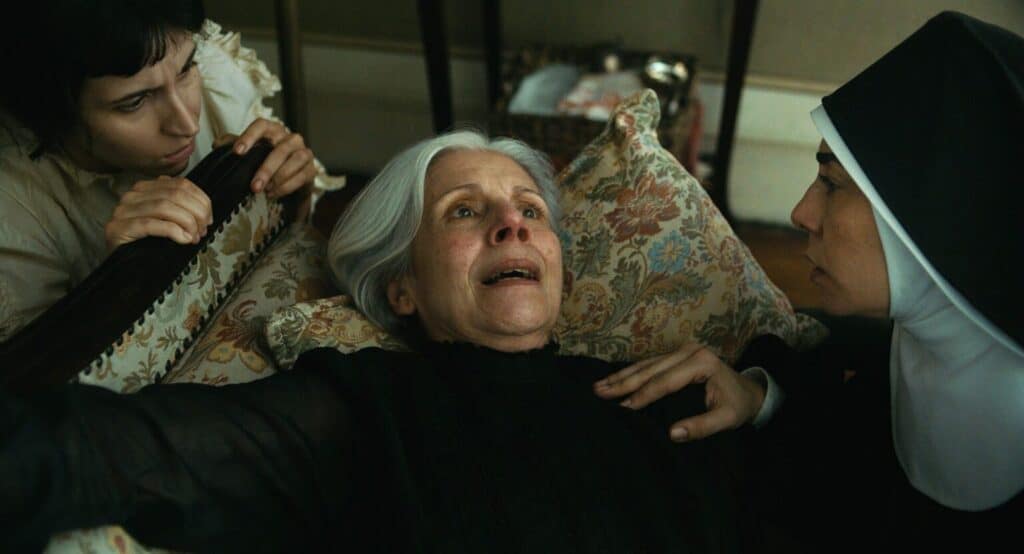
All the Dead Ones by Marco Dutra and Caetano Gotardo has already been reviewed, but this film, with its references to Straub and Oliveria, is still stuck in my mind.
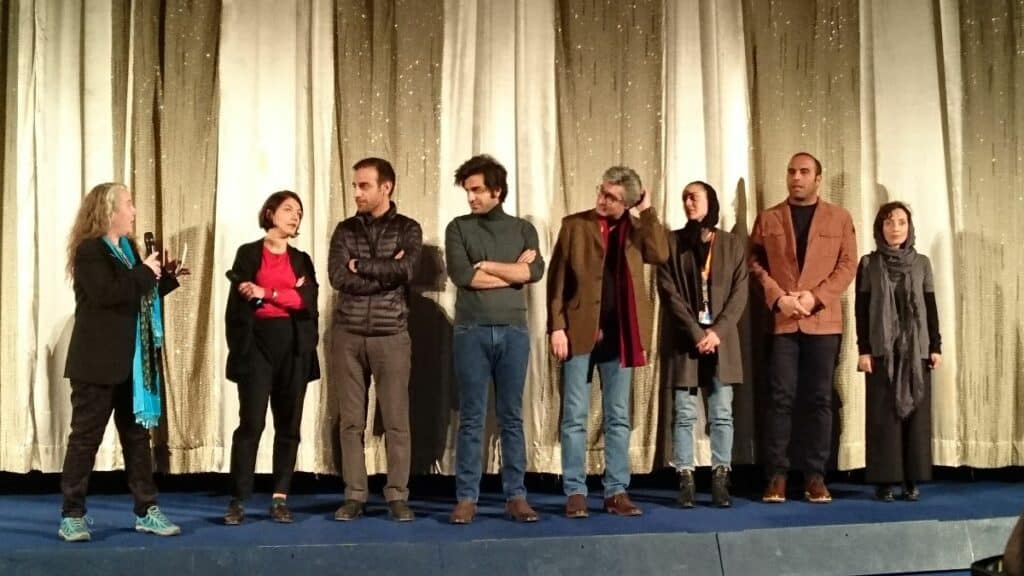
Shahram Mokri (interviewed here) is one of the most interesting directors working today. In 2018, he presented Invasion (Hojoom) in Panorama. This film manages to make something interesting out of shooting a film in one take. It’s a murder mystery of sorts, but in many ways, it feels like a Miklós Jancsó film, for instance, The Tyrant’s Heart (A zsarnok szíve 1981).
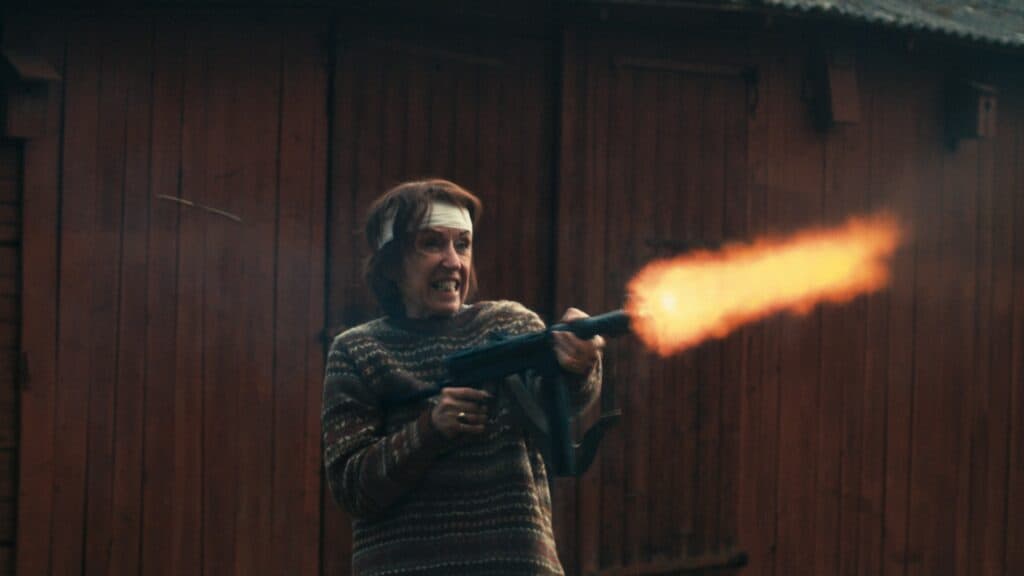
In 2018, I didn’t have accreditation, so I was spared the reportedly disastrous press screening of The Real Estate (Toppen av ingenting), where people were constantly heading for the exit. The gala screening in the evening was a more jolly affair since the directors, Måns Månsson and Alexander Petersén, had plenty of Swedish compatriots among the spectators. The story is about Nojet (Leonore Ekstrand, unforgettable), who thinks she has struck gold when she inherits an estate in Stockholm. Upon arrival, she discovers that the building is in a terrible state and inhabited by tenants without legal contracts.
That is only the start of her problems in this hilarious film that doesn’t pull any punches. Neither did Leonore Ekstrand in scenes that made a Swedish critic state that some sounds would follow him to his grave.
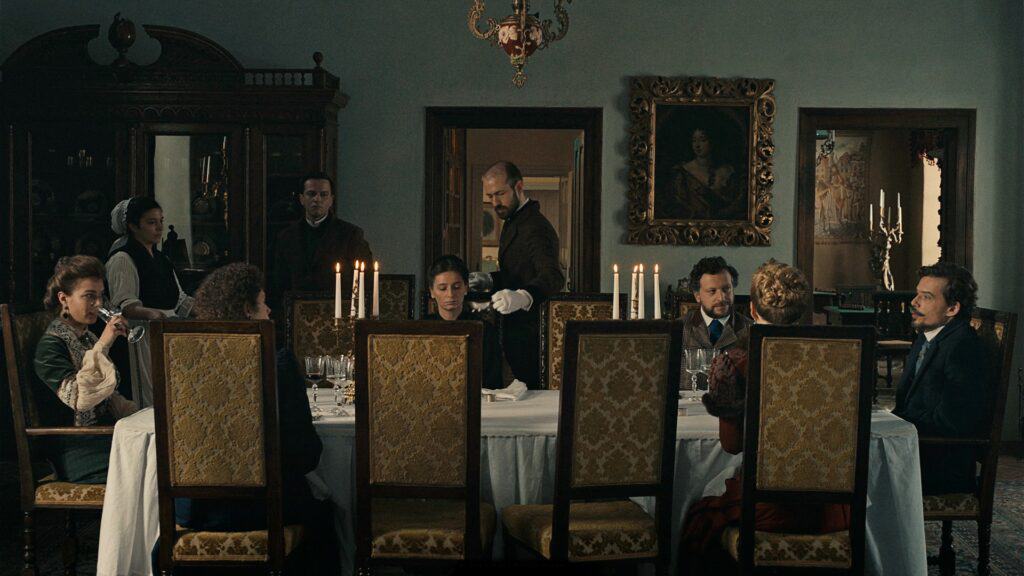
The 2020 was the first edition of the Berlinale under Carlo Chatrian’s direction. He managed to put his stamp on the festival immediately. It is no coincidence that several films from his year as the festival director are among my favourites. Malmkrog by Cristi Puiu was presented in the new Encounters section. This competitive section has proven to be the most interesting since then. The 200-minute film got its fair share of criticism, some going so far as to say it was not what cinema was intended for. I still plan to write a longer piece about this fascinating but demanding work.
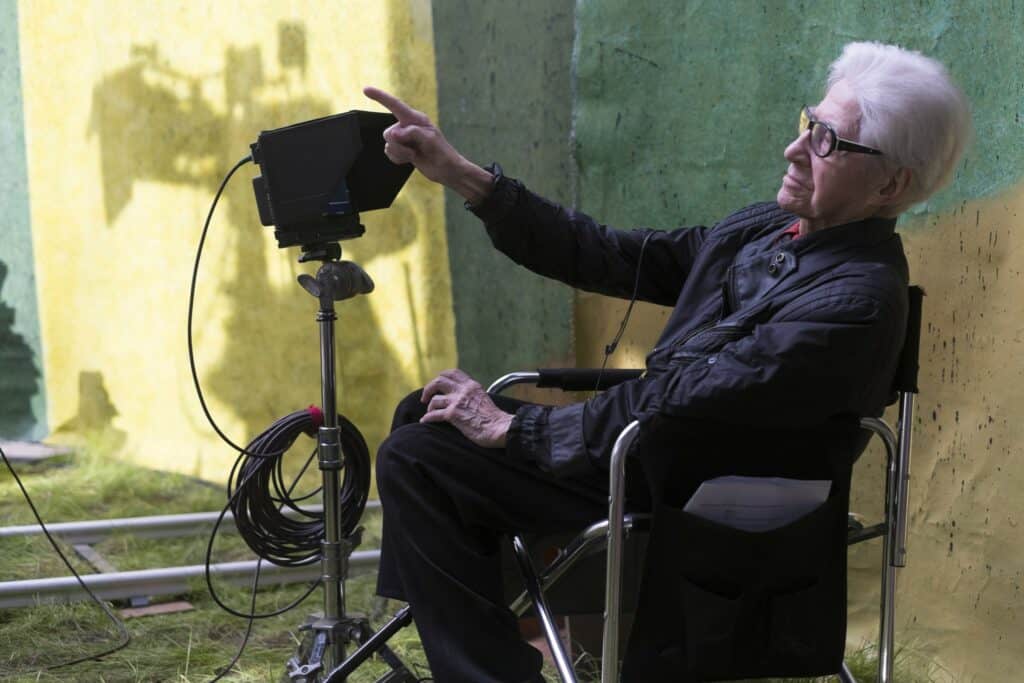
2014 was the first time I attended the Berlinale. The overwhelming reason was to see Alain Resnais’ Aimer, boire et chanter, based on Alan Ayckbourne’s play Life of Riley. Resnais is one of my all-time favourite directors, but I never understood what he saw in Ayckbourne’s work. This was his third adaptation of the British playwright after Smoking/No Smoking (1993) and Coeurs (Private Fears in Public Places 2006. The latter was a commercial and critical success, but I think it’s one of his weakest films. A feeling that wasn’t changed by watching the film eight times.
Aimer, boire, chanter is fascinating and digs into the artificial more successfully than Coeurs. There are also clear connections to Resnais’ penultimate film Vous n’avez encore rien vu (2012). The film won the now-defunct Alfred Bauer prize, and the producer said at the press conference that he had talked to the director, who wasn’t present in Berlin, and they were working on his next project. A few weeks later, Resnais died.

Readers might remember that I think Mal viver was the best film of 2023. I explained why in my review.
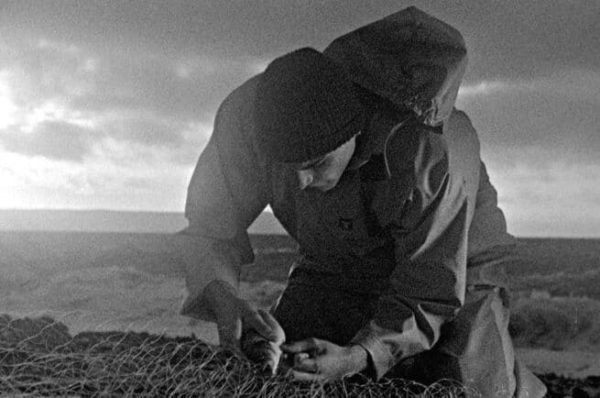
For me, the 2019 Berlinale is synonymous with the discovery of Mark Jenkin. Bait was a refreshing find in the Forum section. It’s a film that is aware of film history but still feels new and different. Again, there is a review where you can read about it.
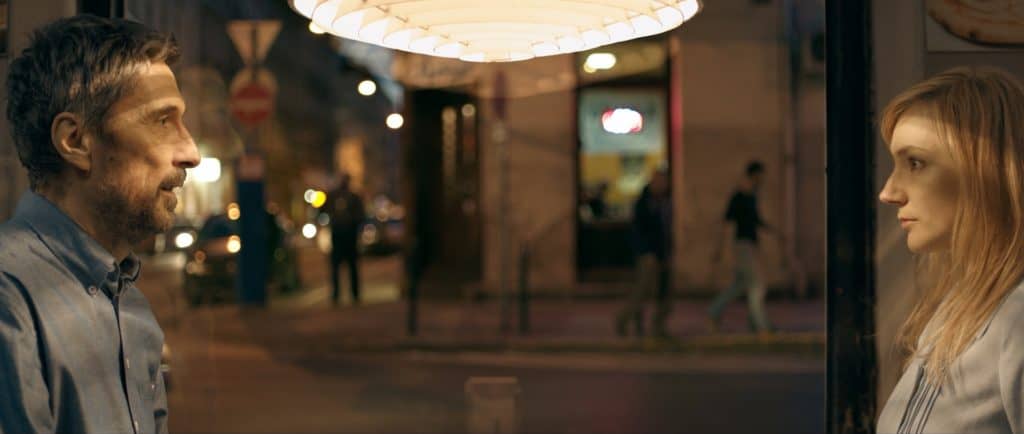
The very first film in the competition in 2017 was the return of Ildikó Eneydi. Eighteen years after her previous film, she returned with Teströl és lélekröl (On Body and Soul). It was difficult to know what to expect, but it turned out to be a triumphant return. To my utter shock, it won the Golden Bear, making it the only such winner on this list. I wrote about the film and her career.
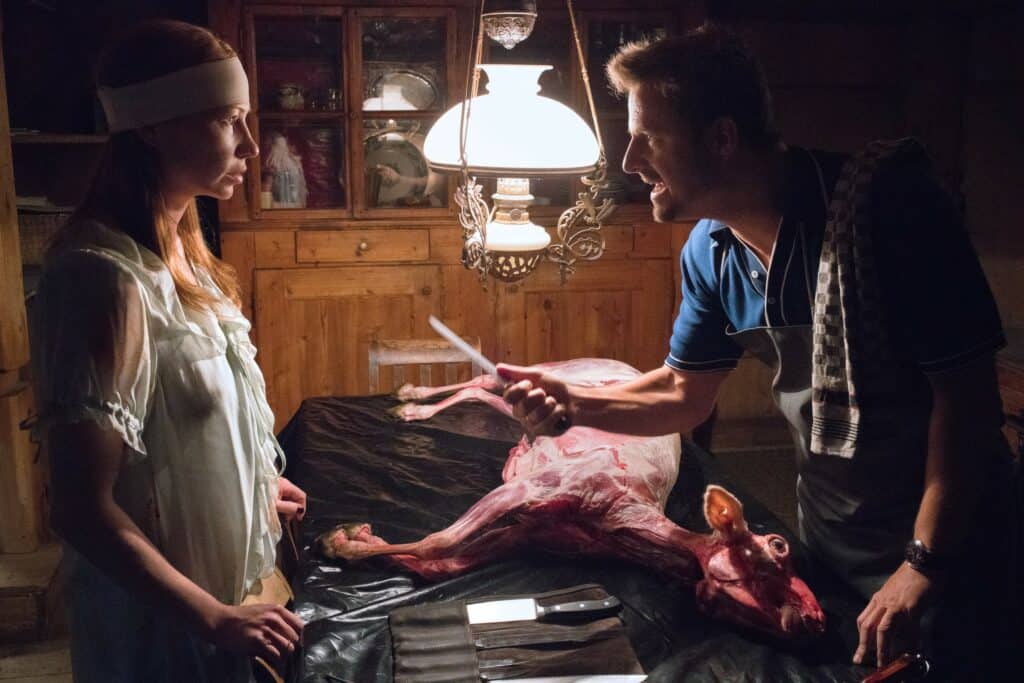
My strongest Berlinale experience remains Tiere (Animals) by Greg Zglinski. How to describe this film? The festival described it like this. “Nick and Anna are off to Switzerland for six months. Nick wants to collect recipes for local cuisine, and Anna finally hopes to write a new book. The time away might be good for their relationship, too, for Anna knows about Nick’s affair with their neighbour Andrea, who threw herself out the window. Mischa will be taking care of the fish and the philodendron in their Viennese apartment while they’re gone. On the drive to Switzerland, they collide with a sheep.”
It all sounds crystal clear, right? My description has always been: Imagine David Lynch; now imagine if he was talented. Then you would have Tiere. The film is endlessly imaginative and also really funny. It is not so easy to watch for some reason, but if you manage to get hold of it, don’t hesitate. The female lead is the fabulous Birgit Minichmayr, who stars in two films in this year’s edition. At least one of them sounds quite promising.
That ends my list. Now, one can only look forward to the 2024 edition, which starts in one week.
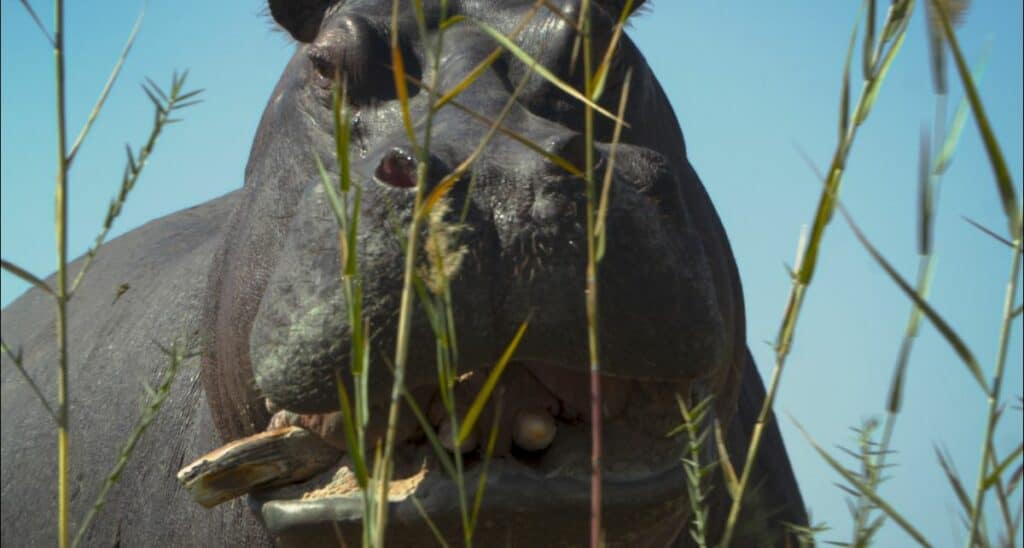
The 2024 edition was Carlo Chatrian’s and Mark Peranson’s last, and the feeling is that they chose to go out with a bang. The decision to screen Pepe in the competition rather than Encounters was far from obvious and probably a sign that they didn’t care what the reception would be like. Watching the faces of most Anglo-Saxon critics after the first press screening was actually one of the festival’s highlights. Pepe is easily the best film I’ve ever seen at the Berlinale. I tried to explain why in my review. It was recently screened at the Gothenburg Film Festival.
Originally published 8/2 2024.
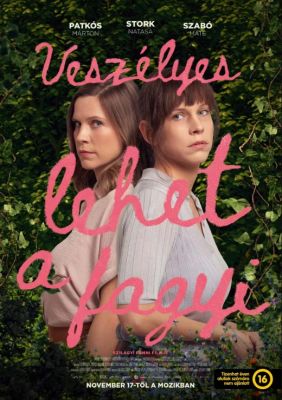
Not a Thing (Veszélyes lehet a fagyi 2022) is the first feature directed by Fanni Szilágyi. The story revolves around two identical twins who lead lives that are far from identical and perceive each other through contrasting perspectives. Éva is a wealthy housewife with a newborn, while Adél is a radiologist with limited income but a burgeoning romantic relationship. She also has an upcoming job in Norway, which could potentially change her life for the better. The film has a diptych structure, where the first part shows events from Adél’s viewpoint, and the second half is dedicated to a narrative through Éva’s eyes.
The man that Adél has feelings for, Ákos (Márton Patkós), works on a building site, and his boss happens to be Éva’s husband, Tamás (Máté Szabó). Will they start a relationship where he will visit her in Norway? Many of the events in the film’s first half, but not all, are repeated in the second half, and the spectator is bound to look for subtle differences in how details are depicted. It is far from a unique way of structuring a film. However, the execution is remarkably assured, not least considering that it is a debut feature. Szilágyi directed an 8-minute short in 2017 called A csatárnö bal lába életveszélyes also starring Stork.

The scriptwriter. Zsófia Lany is a feature debutant as well, but she co-wrote the aforementioned short. The script is skillfully nuanced, with gradual surprises that are consistently earned. That everything is not as it initially seems is a given. Still, the way things differ is more interesting and challenging to decipher than what is commonplace in such a structure and demands the spectator’s participation to interpret the action where, occasionally, two different views of events might not be mutually exclusive. Nothing is redundant in the film; it is one of the few films I wish would have been slightly longer.
Fanny Szilágyi has a degree in cinematography, too, but Not a Thing is shot by her brother Gábor. His lensing perfectly captures the difference between the sumptuous villa on the hill where Éva has a wonderful view of the city and Adél’s cramped apartment. More importantly, the colours and framing also manage to mirror the women’s frame of mind, not least in the latter half. Zsófia Tasnádi’s production design deserves praise as well. However, without a compelling leading actress, it would all be for nothing. Natasa Stork (Preparations To Be Together For An Unknown Period Of Time (Felkészülés meghatározatlan ideig tartó együttlétre 2020) is brilliant in both parts and undeniably manages to create two different characters, albeit with some similarities.
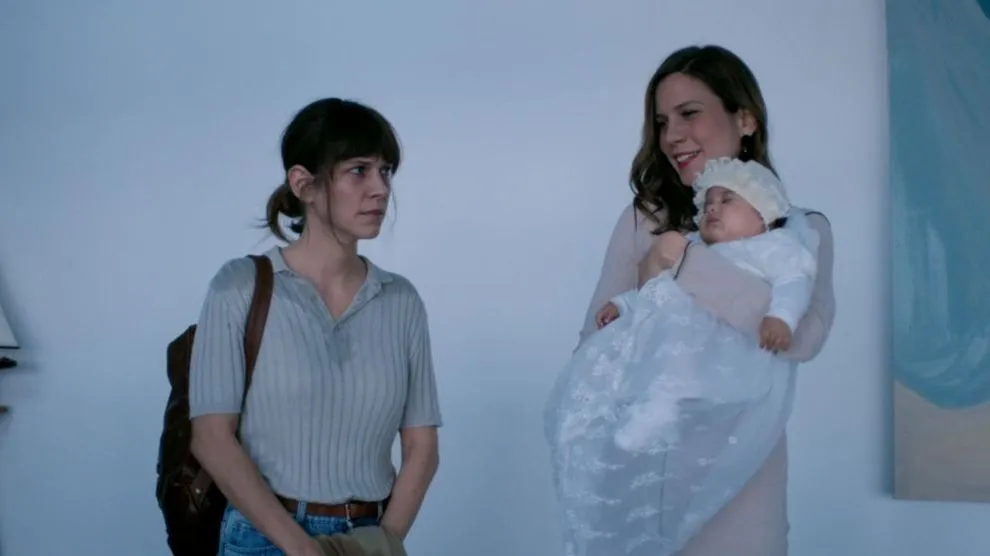
The acting is uniformly fine, not least the female parts, including the mother (Magdi Bodí). The love interest, Ákos, is played by Márton Patkós, who voiced the cat in Cat Call (Cicaverzum 2023). He is good here, as is Máté Szabó as Éva’s husband, in what might be the film’s least thankful role. The film still stands and falls with Stork, who shows she is up to the task. Not a Thing was yet another product of the Incubator Programme, which I’ve written about several times in the past. It is a highly impressive debut feature, and one can only hope that Fanni Szilágyi and Zsófia Lany will be able to continue making accomplished work in the future.
The worst thing about the film is the generic English title. The Hungarian title translates as Ice Cream can be Dangerous. Not a Thing is available on YouTube, but only without subtitles. At the moment, I am not aware of any streaming options.
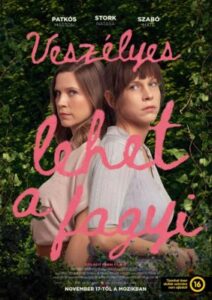
Director:
Fanni Szilágyi
Date Created:
2025-04-15 02:00